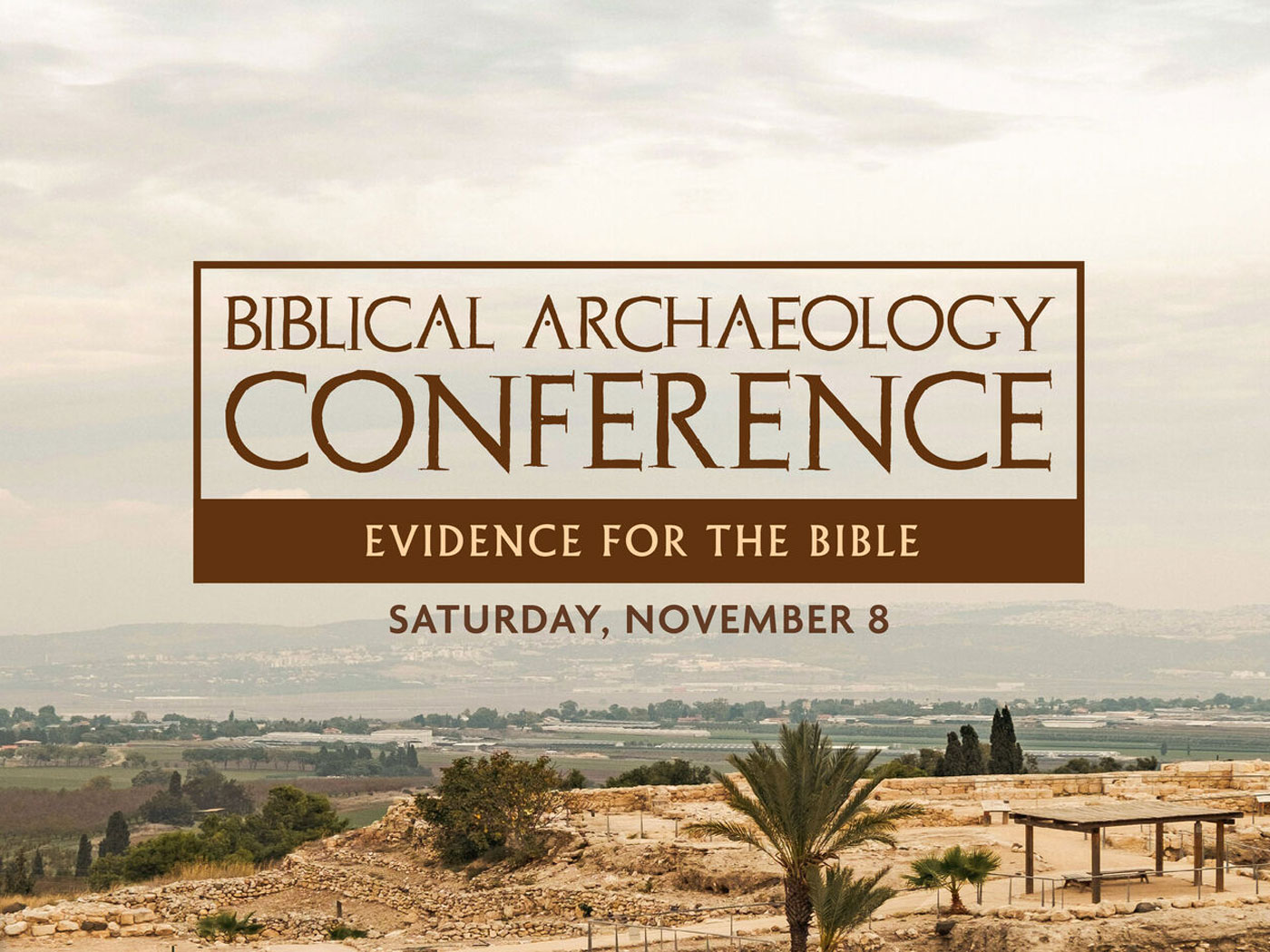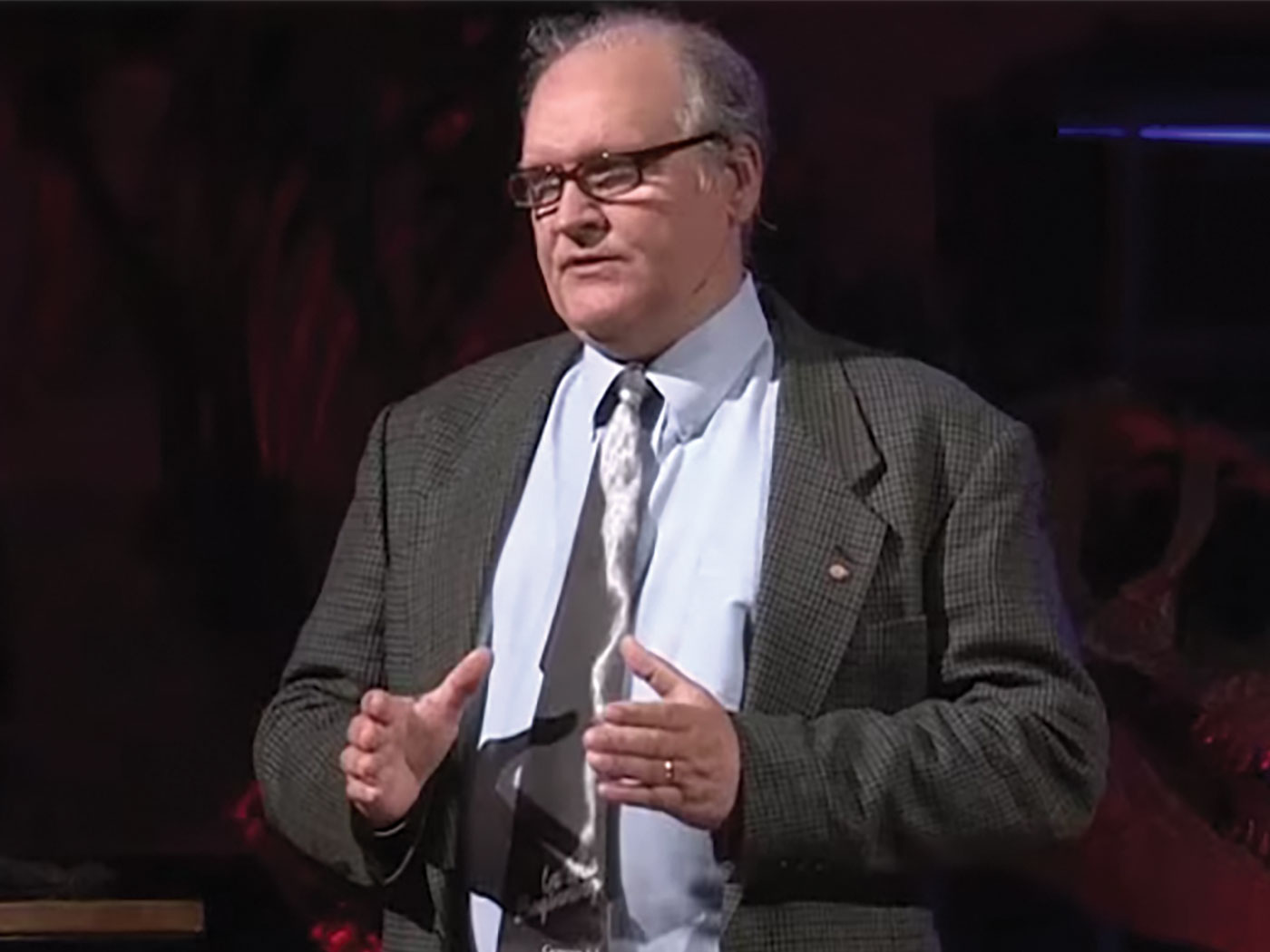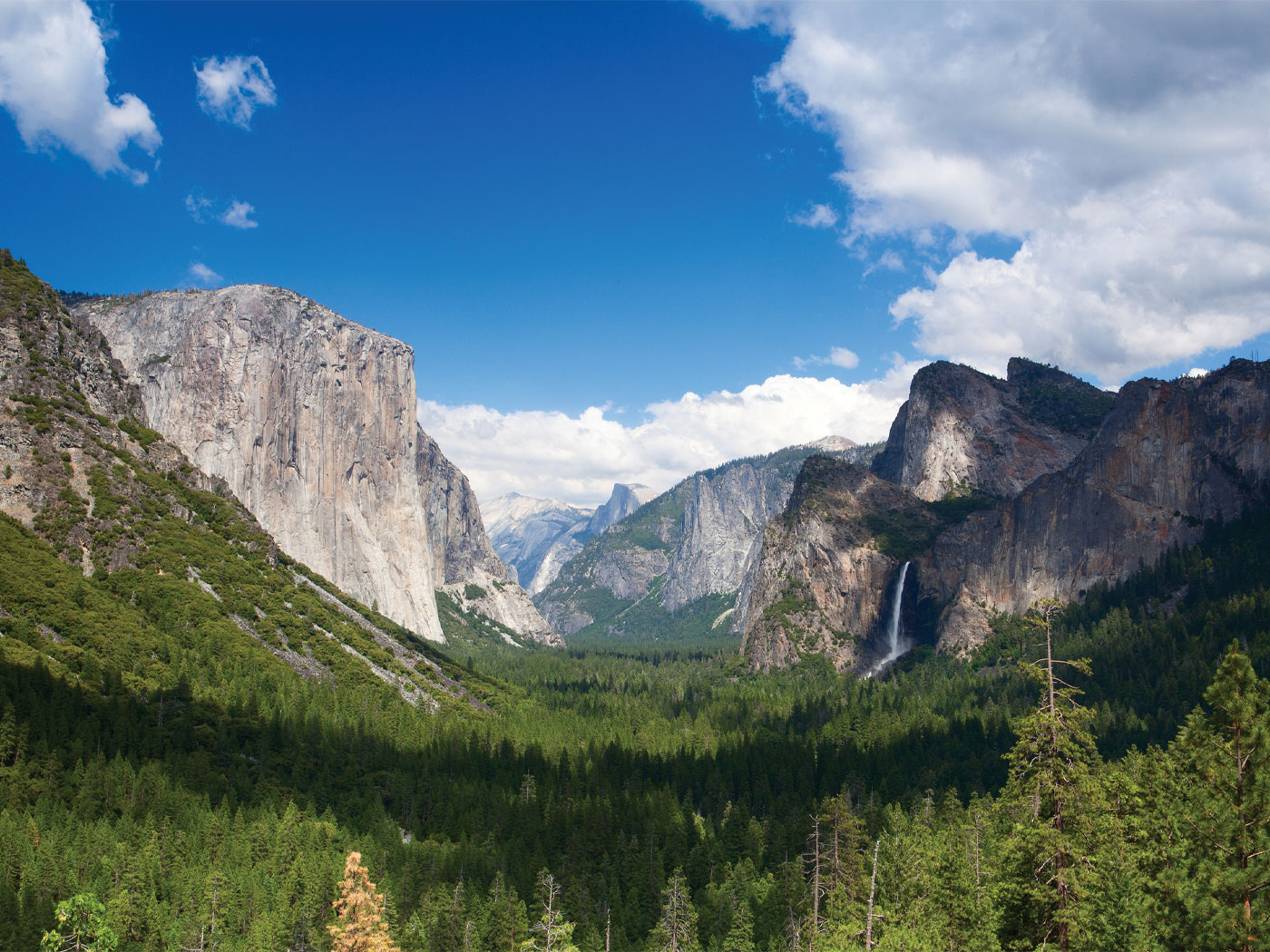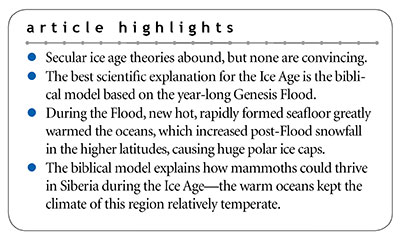 Many Christians are convinced that scientific data demand millions of years for Earth’s history and are therefore dissuaded from believing the Bible’s doctrine of a recent creation. Yet a belief in millions of years actually prevents secular scientists from finding solutions for many mysteries of Earth history—solutions that can be found in the pages of God’s Word. For instance, the Bible, with its short 6,000-year timescale and account of a global flood, is the key to explaining the Ice Age.1
Many Christians are convinced that scientific data demand millions of years for Earth’s history and are therefore dissuaded from believing the Bible’s doctrine of a recent creation. Yet a belief in millions of years actually prevents secular scientists from finding solutions for many mysteries of Earth history—solutions that can be found in the pages of God’s Word. For instance, the Bible, with its short 6,000-year timescale and account of a global flood, is the key to explaining the Ice Age.1
The Bible, with its short 6,000-year timescale and account of a global flood, is the key to explaining the Ice Age. ![]()
Secular Ice Age Theories Are Inadequate
Secular scientists do not have a good explanation for what causes an ice age. In 1997, U.S. News & World Report described this as one of the “great mysteries of science,” stating:
Yet despite the efforts of marine geologists, atmospheric chemists, oceanographers, and more, no one knows what caused the ice ages. “We’ve been chewing on this problem for 30 or 40 years,” says Alan Mix, an oceanographer at Oregon State University. “It’s a killer.” Adds Ralph Cicerone, dean of physical sciences at the University of California–Irvine, “It’s embarrassing.”2
Not much has changed since then. The precise causes of ice ages “remain controversial”3 and are “not completely understood.”4 Secular scientists continue to propose new explanations,5 which is an indication that none of the current ones are very convincing.
Of these explanations, the astronomical (or Milankovitch) ice age theory is the most popular. It holds that slow changes in Earth’s orbital and rotational motions cause differences in the way sunlight falls on the earth’s surface. Supposedly these differences control the timing of ice ages.
However, the changes in sunlight are so small that it’s difficult to see how they alone could cause an ice age. Famed evolutionary astronomer Fred Hoyle once ridiculed the astronomical theory:
If I were to assert that a glacial condition could be induced in a room liberally supplied during winter with charged night-storage heaters simply by taking an ice cube into the room, the proposition would be no more unlikely than the Milankovitch theory.6
The Milankovitch theory became widely accepted because of a 1976 paper titled “Pacemaker of the Ice Ages.”7 This paper used uniformitarian assumptions to claim that data within two deep-sea sediment cores told a story of climate change that agreed with the theory’s expectations. However, this “confirmation” of the astronomical theory depended upon an age assignment that secular scientists themselves no longer believe to be valid.8 The argument is dramatically weakened when this age revision and other changes to the data are taken into account.9
The Biblical Model
Creation scientist and meteorologist Michael Oard has presented strong arguments that the Genesis Flood caused the Ice Age.10,11 Most creationists think that during the Flood the original ocean floor was rapidly subducted into the earth’s mantle and was replaced by new seafloor that formed at the mid-ocean ridges. The heat from the newly formed seafloor significantly warmed the world’s oceans, resulting in greatly increased evaporation from the sea’s surface.12 This dramatically increased the moisture in the atmosphere and led to greater precipitation, including more snowfall at high latitudes and on mountaintops.
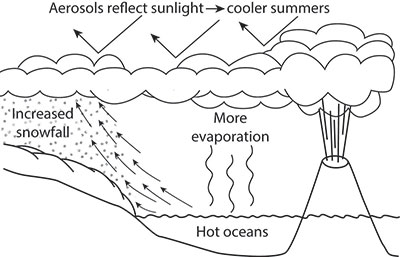
Subduction zone volcanoes continued to erupt for centuries after the Flood, gradually decreasing in number and intensity. They ejected aerosols (tiny particles and droplets) into the atmosphere that reflected significant amounts of sunlight, resulting in cooler summers that prevented winter snow and ice from melting. As the snow and ice accumulated year after year, thick ice sheets formed (Figure 1).
The model developed by Oard makes good meteorological sense. Furthermore, creation researcher and atmospheric scientist Dr. Larry Vardiman used standard meteorological computer models to simulate the effect of warm oceans on precipitation rates. His results demonstrated that very warm waters would dramatically increase snowfall in Yellowstone and Yosemite National Parks, which are known to have been covered by thick ice sheets during the Ice Age.13,14
Likewise, recent volcanic eruptions have demonstrated that large, explosive, sulfur-rich eruptions can cause noticeable global cooling, particularly during the summer and autumn months.15 Both creation and secular scientists agree that past volcanic activity dwarfed anything we see happening today, so these past eruptions definitely had the potential for dramatic summer cooling.
“Millions of Years” Are the Problem
If this scenario makes sense, why can’t secular scientists use warm oceans and volcanic cooling to explain the Ice Age? First, it would take an enormous amount of energy to significantly warm the world’s oceans. This would require cataclysmic conditions that violate their uniformitarian assumption that “the present is the key to the past.” But the Genesis Flood, which they deny, is an ideal candidate for such ocean warming.
Likewise, secular scientists cannot invoke volcanic cooling because of their belief in millions of years of Earth history. They insist that large eruptions—which are known to have occurred—were separated from one another by vast ages. Hence, any cooling they might have provided would be greatly diluted by the assumed long ages between eruptions. This is a clear example of how a belief in millions of years hinders scientific research.
Many Ice Ages or Just One?
Although secular scientists insist that about 50 Pleistocene ice ages have occurred within the last 2.6 million years, there is strong geological evidence for just the most recent one, which creation scientists argue was the only Ice Age. Even secular scientists have acknowledged that a single ice age could explain the geological evidence found in western Canada.16
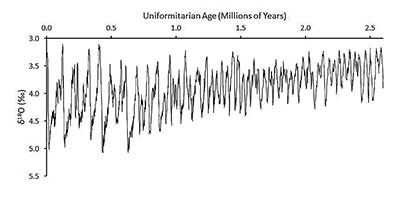
The main argument for 50 Pleistocene ice ages is, believe it or not, a Milankovitch interpretation of chemical measurements obtained from deep-sea sediment cores. Secular scientists used 57 deep-sea cores to construct a composite “stack” of chemical data called oxygen isotope, or δ18O, values that supposedly covers the last 5.3 million years of prehistory.17 These scientists think each oxygen isotope “wiggle” cycle represents a cold/warm ice age-interglacial cycle. They simply counted the number of cycles dated as younger than 2.6 million years. Since they counted around 50 wiggles (Figure 2), voilà!—there were 50 supposed Pleistocene ice ages! But as noted earlier, evidence for the Milankovitch theory is weak at best.
Secular scientists also claim that other major ice ages occurred hundreds of millions of years ago. Some even say the entire earth froze in an event called Snowball Earth. However, the evidence for this claim is also weak. Because rocks embedded in moving glaciers scratch the underlying bedrock, geologists sometimes interpret such scratches as evidence for past glaciers. They have found scratches in locations thought to be near the equator in the very distant past, which they interpret to mean that at one point glaciers grew so large they extended all the way to the equator, covering the entire earth. But debris flows can also cause such scratches, and creation scientists have made strong arguments that the scratches were actually caused by giant underwater landslides during the Genesis Flood.18,19
Wooly Mammoths in Siberia
Michael Oard’s biblical model also solves another major mystery of Earth history: How did millions of wooly mammoths (Figure 3) thrive in Siberia during the Ice Age? There is strong evidence that large numbers of these animals lived there during this time. Today winters in Siberia are bitterly cold. Lows of -40°F are typical, and temperatures colder than the surface of Mars have been recorded.20 How could even the wooly mammoths have endured such temperatures?
Moreover, secular scientists think that Earth is currently in a warm interglacial period, so Siberian Ice Age temperatures would presumably have been even colder. Even if mammoths could somehow tolerate those temperatures, how could these huge creatures find sufficient food and water in such a harsh climate? And a number of factors, such as long gestation times, would have made it difficult, if not impossible, for mammoths to migrate to warmer areas during the Siberian winters.
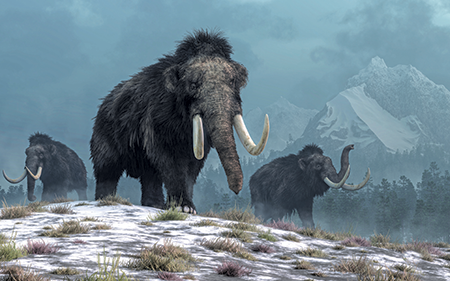
The only logical explanation is that, for some reason, the Siberian climate was more temperate during the Ice Age than it is today. Oard’s model provides a simple, straightforward explanation for this surprising result. Oceans would have remained warm for hundreds of years after the Flood. In fact, there would have been no Arctic sea ice during the Ice Age. Warm, moist ocean air helped to moderate the Siberian climate in much the same way that warm, moist air from the Pacific Ocean helps to moderate the climate of Seattle, Washington, today. Although Siberian winters were still cold during the Ice Age, they would have been tolerable for the wooly mammoths.1 This also explains why the coastal lowlands of Siberia were never covered by ice, even though secular ice age models predict that they would have been.10
Secular scientists can’t use this simple explanation because according to their evolutionary story, Arctic sea ice has been present for at least the last 100,000 years,21 long before the time they think the mammoths went extinct about 10,000 years ago. This means that according to the secular model, Arctic sea ice was present while the mammoths lived in Siberia. With sea ice present and warm oceans absent, Siberia would have been as cold as it is today, if not more so. So again, secular scientists’ belief in millions of years prevents them from seeing a straightforward explanation for this well-known mystery.
Oard’s model also explains why the mammoths went extinct. As the Ice Age ended, tremendous volumes of fresh meltwater flowed to the Arctic Ocean. Being less dense than salt water, this fresh water remained on top of the sea’s surface and froze, forming a layer of sea ice. With the climate-moderating influence gone, temperatures quickly dropped, and the mammoths succumbed to the colder temperatures.22 Using basic meteorological reasoning, Oard shows that these colder high-latitude temperatures, combined with a dryer climate at the end of the Ice Age, would have resulted in enormous dust storms, which overtook and buried some of the mammoths. After burial, the dust froze around their remains. This is why many Siberian mammoth carcasses are found in frozen hills of wind-blown silt called loess.1
Christians don’t need to accept the millions of years projected by secular scientists. ![]()
The Bible’s History Is the Solution
Christians don’t need to accept the millions of years projected by secular scientists. Time after time, the scientists’ deep-time theories fail to provide adequate explanations. The biblical timeline, however, is a different story. It is not a problem or an embarrassment for which Christians need to apologize. Rather, it’s the key to making sense of Earth’s history!
References
- Oard, M. J. 2006. Frozen in Time. Green Forest, AR: Master Books.
- Watson, T. 1997. What causes ice ages? U.S. News & World Report. 123 (7): 58-60.
- Ice age. New World Encyclopedia. Posted on newworldencyclopedia.org, accessed December 12, 2016.
- Ice Ages. BBC. Posted on bbc.co.uk, accessed December 12, 2016.
- University of Royal Holloway London. New theory on cause of ice age 2.6 million years ago. ScienceDaily. Posted on sciencedaily.com June 27, 2014, accessed September 7, 2018.
- Hoyle, F. 1981. Ice: the Ultimate Human Catastrophe. New York: Continuum, 77.
- Hays, J. D., J. Imbrie, and N. J. Shackleton. 1976. Variations in the Earth’s Orbit: Pacemaker of the Ice Ages. Science. 194 (4270): 1121-1132.
- Hebert, J. ‘Big Science’ Celebrates Invalid Milankovitch Paper. Creation Science Update. Posted on ICR.org December 26, 2016, accessed September 7, 2018.
- Hebert, J. More Problems with Iconic Milankovitch Paper. Creation Science Update. Posted on ICR.org July 13, 2018, accessed September 7, 2018.
- Oard, M. J. 1990. An Ice Age Caused by the Genesis Flood. Santee, CA: Institute for Creation Research.
- Oard, M. J. 2005. The Frozen Record. Santee, CA: Institute for Creation Research.
- Clarey, T. 2016. Embracing Catastrophic Plate Tectonics. Acts & Facts. 45 (5): 8-11.
- Vardiman, L. 2010. An Ice Age in Yosemite National Park. Acts & Facts. 39 (3): 12-13.
- Vardiman, L. 2010. An Ice Age in Yellowstone National Park. Acts & Facts. 39 (12): 12-14.
- Bradley, R. S. 1988. The Explosive Volcanic Eruption Signal in Northern Hemisphere Continental Temperature Records. Climatic Change. 12 (3): 221-243.
- Oard, M. J. 2015. Only one glaciation observed in western Alberta, Canada—the ice-age reinforcement syndrome. Journal of Creation. 29 (2): 12-13.
- Lisiecki, L. E. and M. E. Raymo. 2005. A Pliocene-Pleistocene stack of 57 globally distributed benthic δ18O records. Paleoceanography. 20, PA1003.
- Molén, M. 1990. Diamictites: Ice-Ages or Gravity Flows? In Proceedings of the Second International Conference on Creationism, Technical Symposium Sessions. R. E. Walsh and C. L. Brooks, eds. Pittsburgh, PA: Creation Science Fellowship, 177-190.
- Oard, M. J. 2009. Landslides Win in a Landslide over Ancient “Ice Ages.” In Rock Solid Answers: The Biblical Truth Behind 14 Geological Questions. M. Oard and J. K. Reed, eds. Green Forest, AR: Master Books, 111–123.
- Rice, D. So you think you’re cold? How does 88 below zero sound? USA Today. Posted on usatoday.com January 17, 2018, accessed September 10, 2018.
- Johnston, I. Arctic could become ice-free for first time in more than 100,000 years, claims leading scientist. The Independent. Posted on independent.co.uk June 4, 2016, accessed September 10, 2018.
- Some have speculated that the wooly mammoths were “quick frozen” as temperatures rapidly dropped to -150°F. Although this idea was once popular, Michael Oard’s model is a better explanation for the data, which includes partially preserved food found in mammoth stomachs. The wooly mammoths did succumb to colder temperatures, but such a stupendously rapid temperature drop is physically unrealistic and isn’t needed to explain the data.
* Dr. Hebert is Research Associate at the Institute for Creation Research and earned his Ph.D. in physics from the University of Texas at Dallas.





